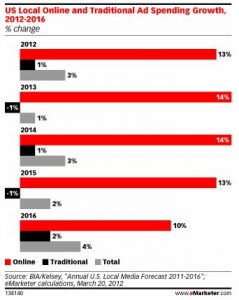Search marketing company WordStream says Google has declared war on free clicks and the SEO industry. And I agree with them. Here’s why.
1. Google doesn’t make any money from SEO.
That’s right, Google is a multi-billion dollar company whose business is based almost entirely on getting you to click on search ads. It doesn’t benefit Google for you to have “good” SEO – they care about more people clicking.
2. People Click Search Ads
We all like to think that no one clicks on search ads. Wrong. In fact, 64.6% of commercial intent keywords come from SEM ads in Google. Only 35.4% come from organic, unpaid results. That’s almost two-thirds of all clicks that go to paid results.
3. SEO is Convoluted and Dying
In the modern Google search page, ads and local listings dominate the results. On average, less than 15% of the page is from organic listings. Additionally, the top three spots take 41.1% of the clicks, whereas the top organic listing only gets 8.9% of the clicks. Since Google never discloses exactly what makes “good” SEO, most companies are forced to make educated guesses on exactly what Google is looking for.
Those are just three of the many reasons why the SEO industry is dying. Clickstream made an awesome infographic which you can find here.
It’s time to start putting your hard-earned advertising dollars into something that converts. Contact us today and see why you should get started with Google AdWords.








